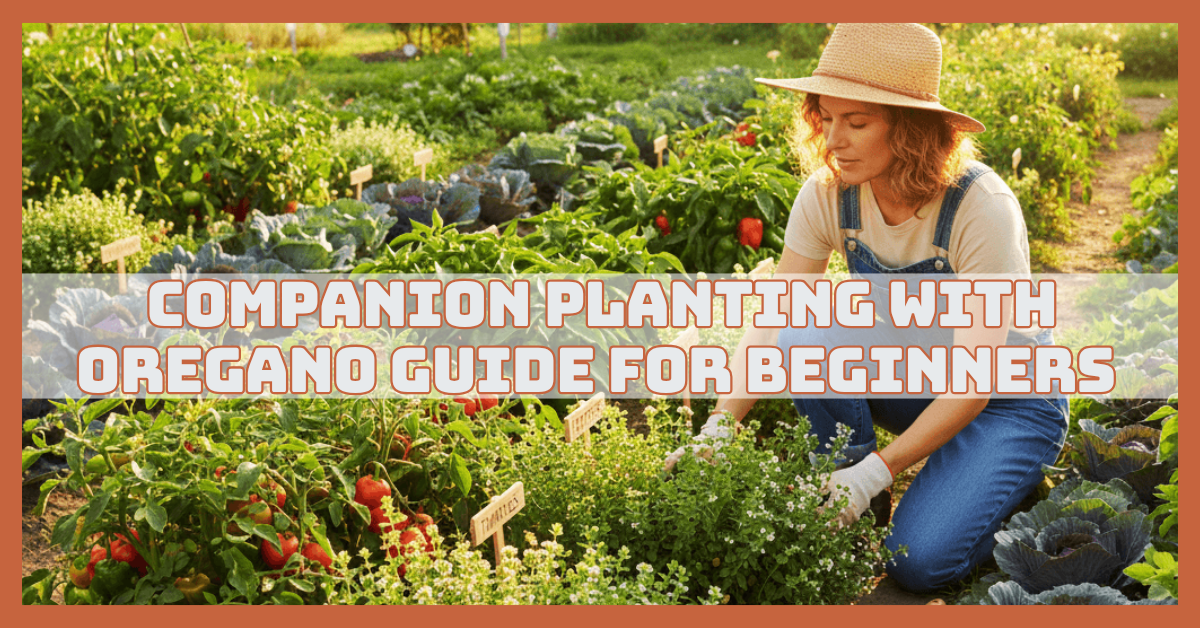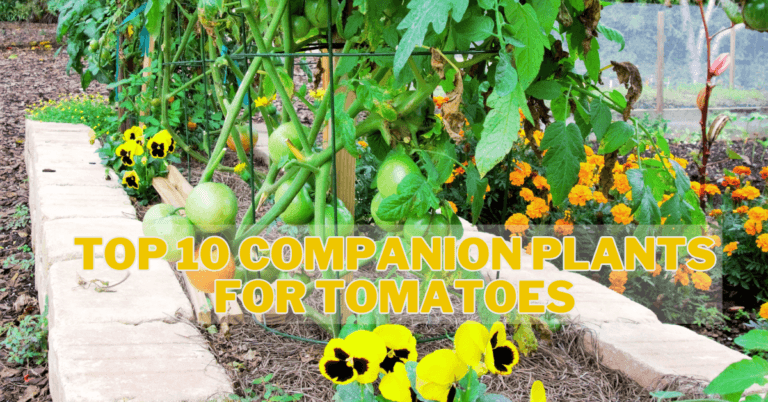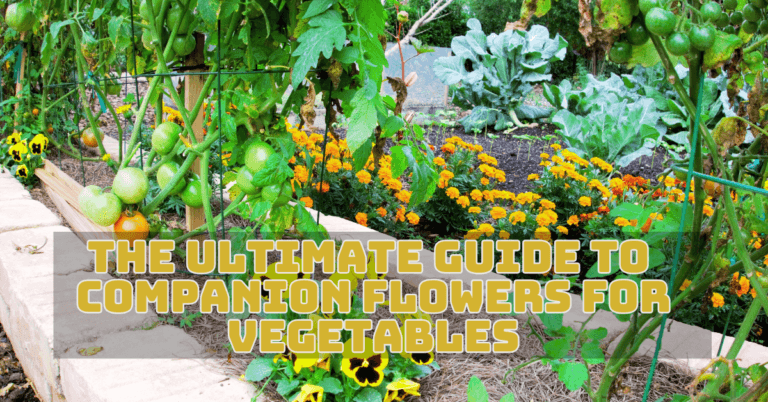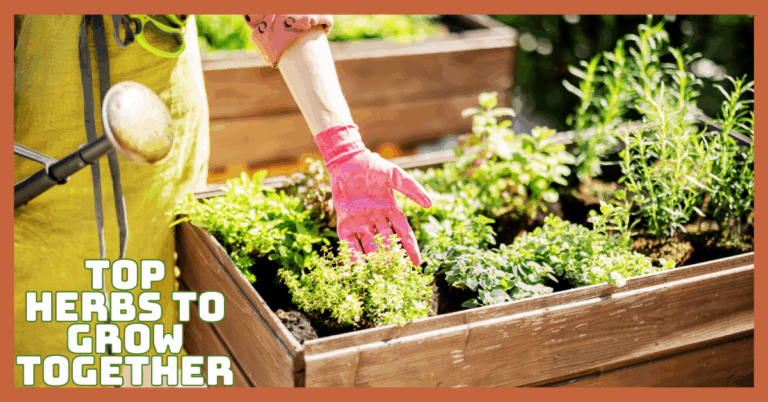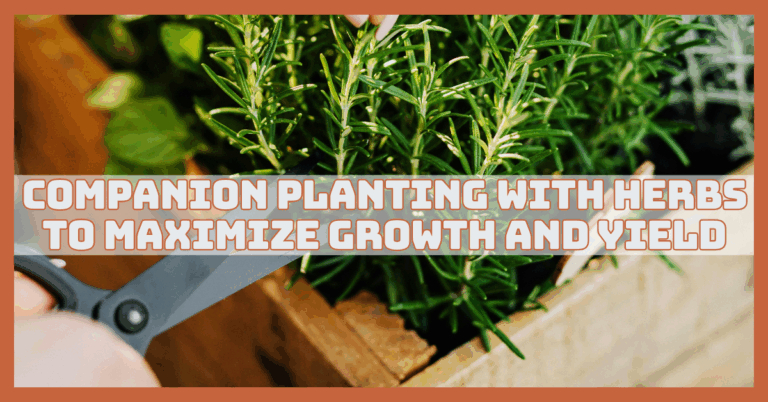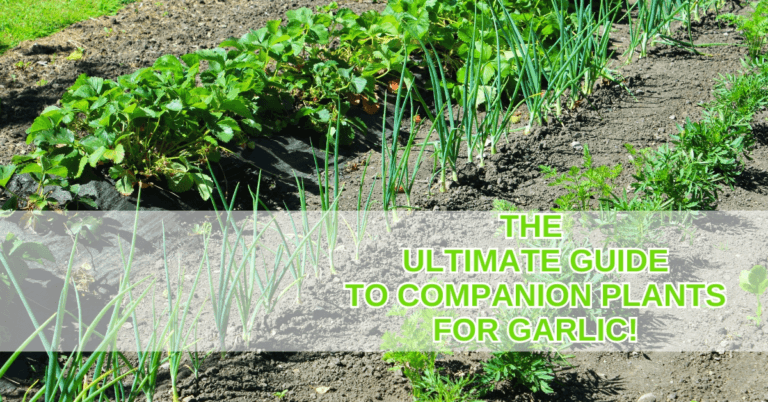Companion Planting With Oregano Guide For Beginners
Companion planting is one of gardening’s best-kept secrets. It’s a simple, natural way to grow healthier plants, repel pests, and improve harvests — all without chemicals.
Among all the companion plants you can grow, oregano stands out as an actual garden hero. Companion planting with oregano is a simple and effective way to naturally protect your garden, attract pollinators, and enhance the growth of neighbouring plants.
If you’re new to gardening or companion planting, this step-by-step guide will show you exactly how to use oregano to create a thriving, balanced garden ecosystem.
Step-by-Step Companion Planting With Oregano Guide For Beginners
Step 1: Understand Oregano’s Growing Needs
Before pairing oregano with other plants, you must understand what it likes. Oregano thrives in full sunlight and dry, well-drained soil. It doesn’t enjoy soggy roots or shade.
The soil should be slightly sandy with a neutral to slightly alkaline pH. Water sparingly and let the soil dry between watering sessions. If you’re growing oregano indoors, keep it near a sunny window.
Outdoors, choose a warm, sunny spot. Once established, it’s hardy and low-maintenance. Knowing its needs first helps you place it in the right spot for strong, healthy, aromatic growth that benefits the whole garden.
Key Tips
- Full sun is essential
- Avoid overwatering at all times
- Use sandy, well-drained soil
- Keep soil pH slightly alkaline
Step 2: Choose The Right Oregano Variety
There are several oregano types, and choosing the right one matters. Greek oregano is the most popular for companion planting because it’s highly aromatic and pest-repelling.
Italian oregano offers a milder flavour and pairs beautifully in culinary gardens. Golden oregano adds colour, acting as both a protector and an ornamental. Choose based on your purpose—pest control, cooking, or appearance.
Also, check your climate; Greek oregano handles heat better, while Italian oregano prefers moderate weather. Selecting wisely ensures your oregano supports neighbouring plants effectively and provides long-lasting results in your garden’s overall balance and productivity.
Key Tips
- Greek oregano is best for gardens
- Italian oregano suits mild climates
- Golden oregano brightens garden edges
- Match variety to your purpose
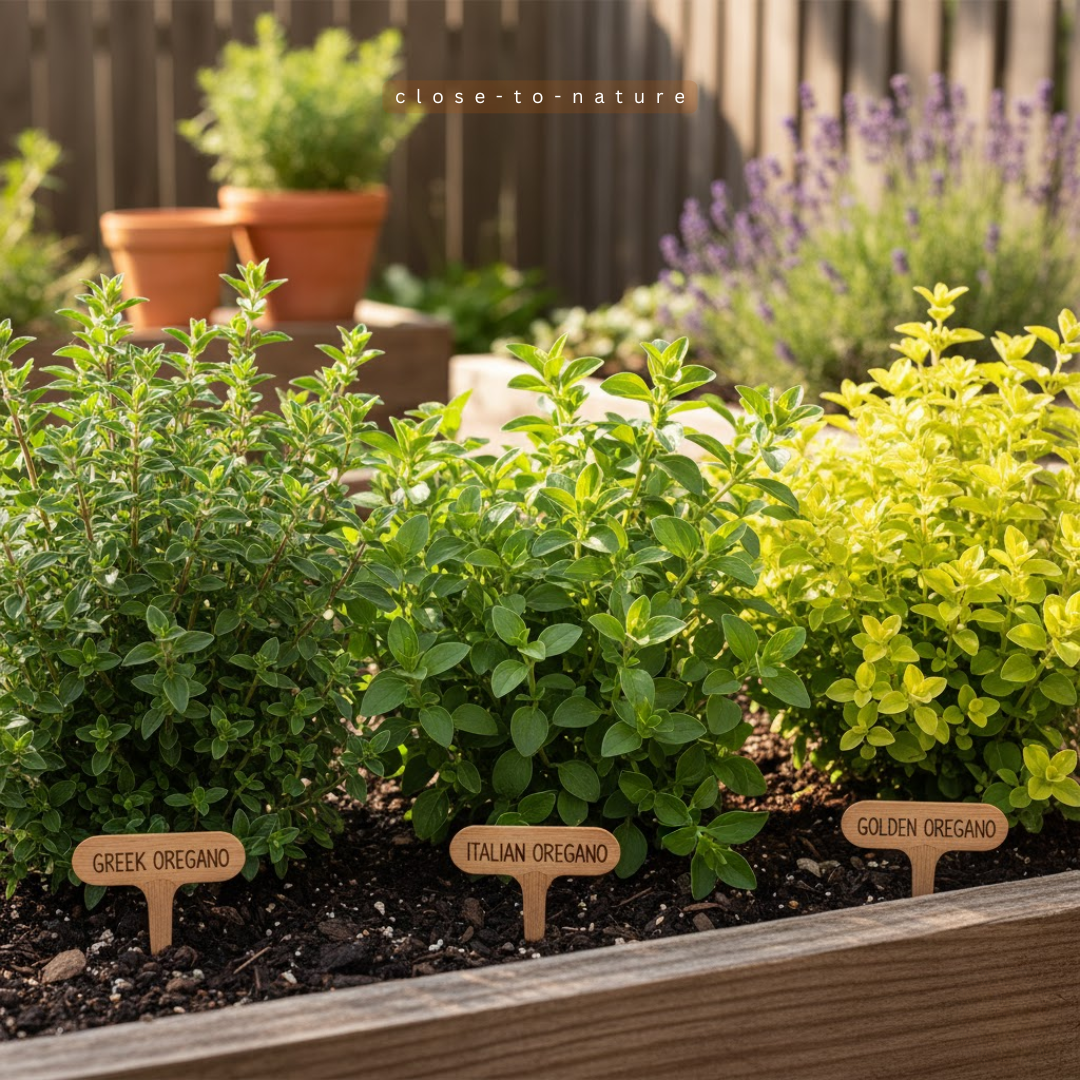
Step 3: Decide Where To Plant Oregano
Placement plays a huge role in success. Oregano grows best in spots with full sunlight and good airflow. Plant it along garden borders or between vegetables for pest protection. It also works beautifully in containers or raised beds.
Avoid overly moist areas since oregano dislikes wet feet. For smaller gardens, pots on sunny patios work perfectly. Oregano near tomatoes or peppers gives mutual benefits.
Ensure spacing between plants for proper air circulation. With the correct placement, oregano becomes an efficient, natural defender that supports your plants while adding aroma and structure to your garden design.
Key Tips
- Choose sunny, airy locations
- Avoid waterlogged garden spots
- Use containers for small gardens
- Give plants space to breathe
Step 4: Prepare The Soil Properly
Any healthy oregano plant starts with healthy soil. Start by loosening your soil about 8–10 inches deep. Add organic materials or compost to add nutrition. Add sand or perlite if your soil retains too much moisture.
Oregano loves well-drained conditions, so avoid compacted areas. A quick pH test helps too; oregano prefers soil that’s neutral or slightly alkaline. If it’s too acidic, mix in lime.
Good soil ensures strong roots and vibrant growth. Taking time to prepare the soil pays off later, keeping your oregano lush, fragrant, and resilient throughout the growing season.
Key Tips
- Loosen soil before planting
- Add compost for nutrients
- Ensure strong drainage always
- Test soil pH before use
Step 5: Planting Oregano Seeds Or Transplants
You can grow oregano from seeds or transplants. If using seeds, sow them lightly on top of the soil indoors about six weeks before the last frost.
Don’t bury them deeply—just press gently. Transplant seedlings outdoors once temperatures warm up. If using nursery plants, space them about 12–18 inches apart to allow airflow. Firm the soil gently around roots and water lightly.
Add mulch afterward to hold moisture. Within weeks, you’ll see fresh green shoots forming. It’s simple, quick, and satisfying to plant oregano, especially when you follow timing, spacing, and care tips from the start.
Key Tips
- Sow seeds lightly on top
- Transplant after frost ends
- Space plants 12–18 inches
- Mulch helps retain moisture
Step 6: Companion Planting With Oregano
Now comes the fun part—pairing oregano with others. Companion planting with oregano helps protect vegetables, enhance flavours, attract beneficial insects, and maintain a balanced, pest-free garden ecosystem naturally.
It pairs perfectly with tomatoes, peppers, cabbage, and beans. Near tomatoes, it deters whiteflies and enhances flavour. Around peppers, it keeps aphids away.
When planted beside cabbage or kale, it confuses pests like moths and beetles. Oregano’s scent also helps nearby herbs like basil grow stronger.
Avoid planting near mint, which spreads aggressively. Mix oregano throughout your garden strategically. It’s a living shield that enhances flavour, encourages pollination, and promotes garden harmony from root to leaf.
Key Tips
- Pair with tomatoes and peppers
- Avoid planting near mint
- Encourages beneficial insects nearby
- Repels common harmful pests
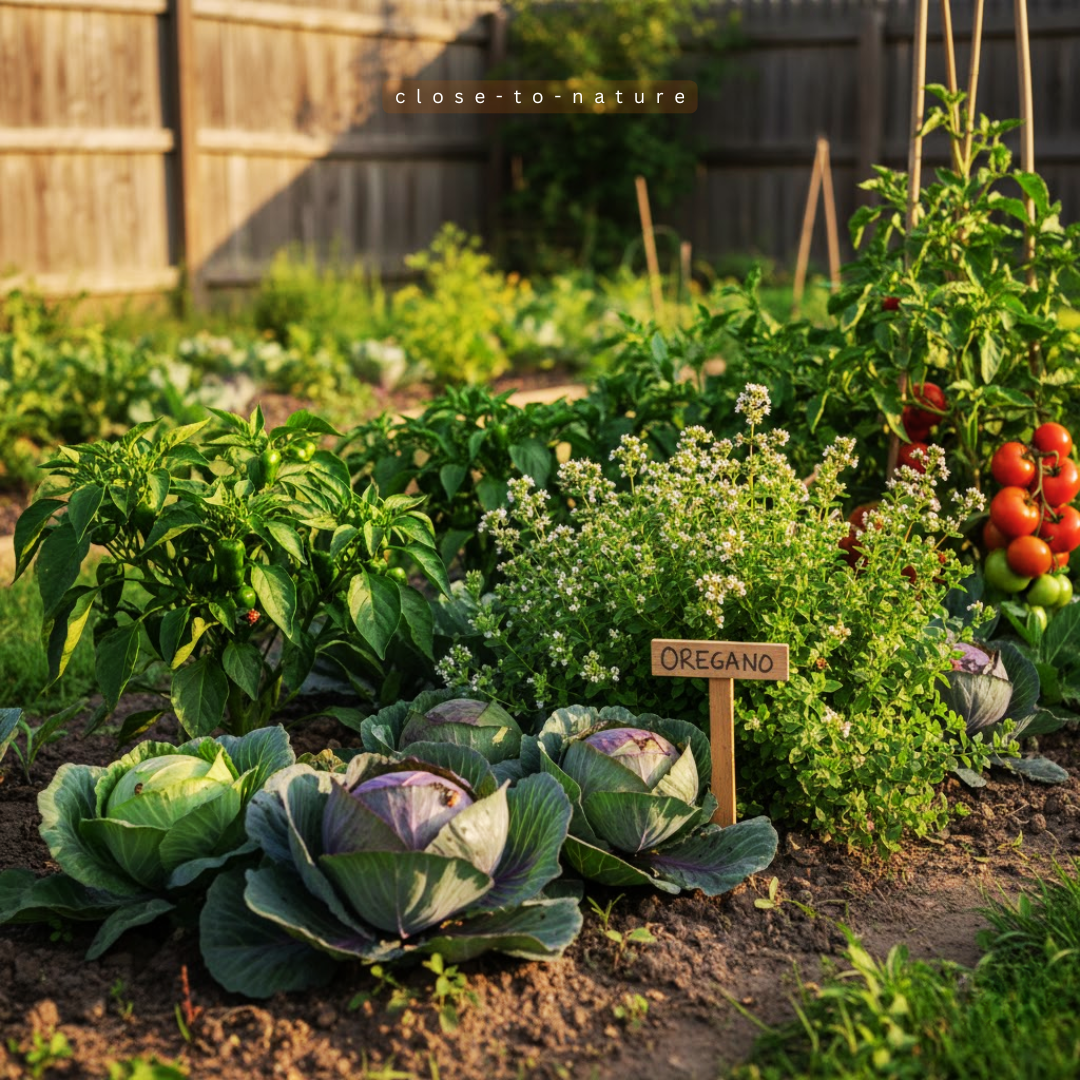
Step 7: Caring For Oregano And Companions
Oregano is low-maintenance but still needs some love. Water sparingly—too much water harms roots. Trim regularly to encourage bushy growth. Light pruning helps keep the plant neat and productive.
Fertilize lightly once during the growing season with compost or organic feed. Remove weeds that compete for nutrients. Keep an eye out for pests, though oregano rarely suffers from infestations.
With minimal effort, it thrives and continues supporting your garden allies. Consistent light, dry conditions, and gentle care will reward you with lush greenery, fragrant air, and resilient companion plants thriving beside it all season.
Key Tips
- Trim plants regularly for shape
- Avoid heavy watering
- Fertilize once per season
- Remove competing weeds early
Step 8: Using Oregano As Living Mulch
Oregano makes excellent living mulch. It spreads gently, covering soil between larger plants like tomatoes or peppers. This natural blanket keeps weeds down, reduces water evaporation, and stabilizes soil temperature.
It also prevents erosion and helps beneficial soil organisms thrive. Unlike traditional mulch, oregano adds fragrance and beauty while staying green all season. Just trim it occasionally so it doesn’t crowd neighbours.
This dual-purpose role saves you from extra weeding and keeps the garden balanced naturally. With oregano as mulch, your soil stays moist, fertile, and cool—exactly what healthy roots need.
Key Tips
- Trim regularly to control the spread
- Use under tall companion plants
- Suppresses weeds effectively
- Keeps soil cool and moist
Step 9: Overwintering And Long-Term Care
Companion planting with oregano ensures a pungent, perennial herb that protects and supports nearby plants year after year. Before winter, cut stems back by half and cover roots with mulch to protect from frost.
In colder regions, grow oregano in pots and bring them indoors near sunlight. Once spring returns, prune dead stems and feed with compost to rejuvenate growth. Divide older plants every few years to keep them healthy.
With this routine, your oregano keeps thriving for seasons to come—stronger, bushier, and more productive each year, continuing to serve as your garden’s reliable and fragrant companion protector.
Key Tips
- Mulch heavily before winter frost
- Prune dead stems in spring
- Bring pots indoors for winter
- Divide plants every few years
Turn Your Passion for Nature Into Income
🌿 Whether you love gardening, caring for animals, or exploring holistic living,
You can share your knowledge online and earn from it.
Discover how nature lovers are growing their passions into meaningful, income-generating blogs. 👇
Step 10: Oregano For Pollinators And Beneficial Insects
Bees, butterflies, and beneficial insects like hoverflies and ladybugs are all drawn to the tiny but potent blossoms of oregano. These insects help pollinate vegetables and fruits while feeding on garden pests.
When oregano blooms, it becomes a hub of natural activity, boosting your garden’s biodiversity—place oregano near flowering plants or vegetables to draw more pollinators. The more pollinators visit, the healthier your harvest becomes.
Oregano’s continuous bloom period also ensures a steady food source for helpful insects, creating a self-sustaining, thriving ecosystem right in your backyard all season long.
Key Tips
- Plant near flowering vegetables
- Encourages bees and butterflies
- Attracts ladybugs and hoverflies
- Supports pollinator-friendly gardens
Step 11: Growing Oregano In Containers
Oregano grows beautifully in pots, making it ideal for balconies, patios, or small gardens. Use a container with good drainage and at least eight inches of depth. Choose lightweight soil and avoid overwatering.
Containers let you move oregano easily to sunnier spots when needed. Pair it with other drought-loving herbs like thyme or rosemary for a mini herb garden.
Container oregano also deters pests from nearby plants and looks beautiful year-round. Regular trimming keeps it compact and fragrant.
Growing oregano this way gives flexibility, easy maintenance, and accessibility, especially for gardeners with limited space.
Key Tips
- Use pots with drainage holes
- Avoid overwatering the container oregano
- Move pots toward sunlight
- Trim often for compact growth
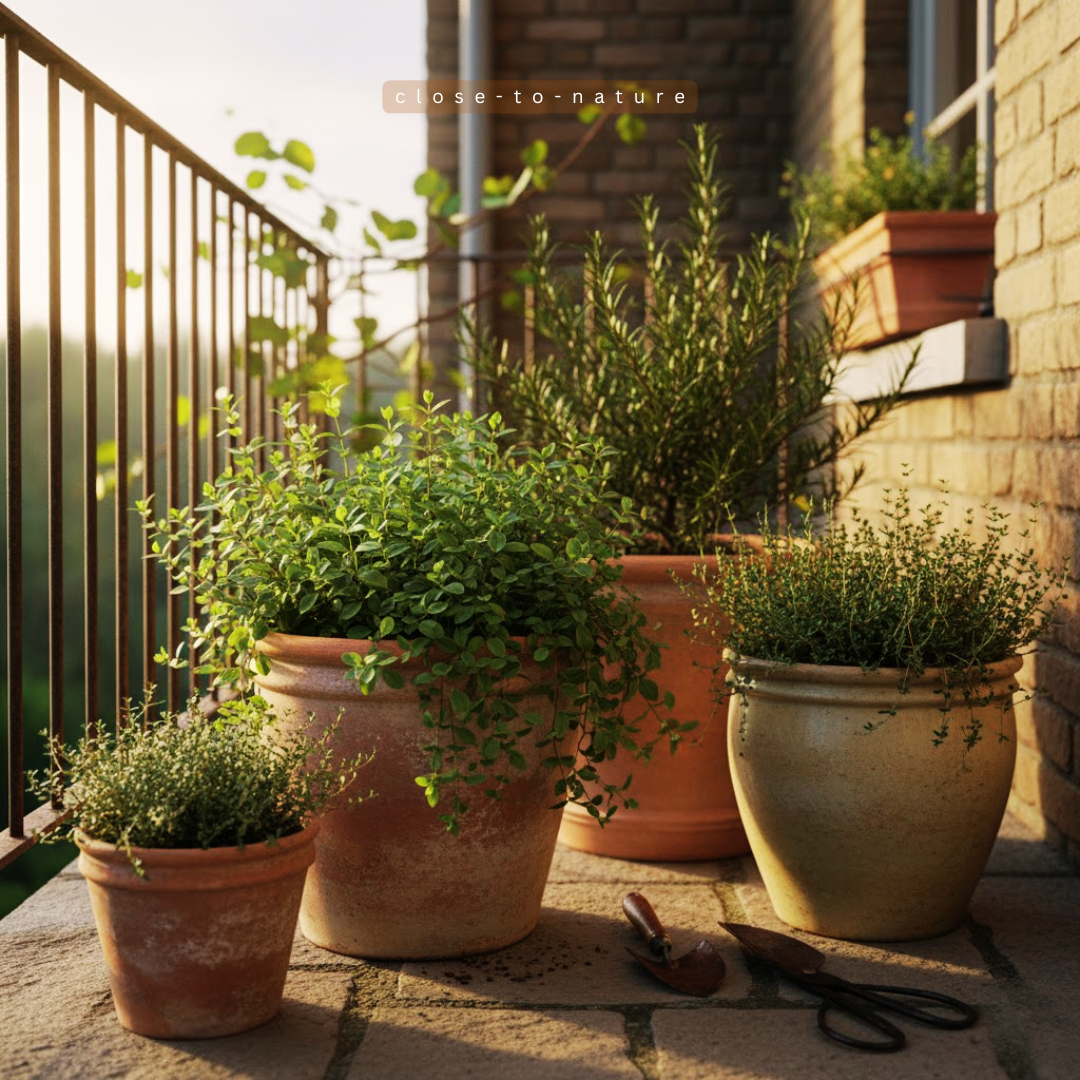
Step 12: Harvesting Oregano The Right Way
Harvest time is when the absolute joy begins. Cut stems once they reach about six inches tall. Morning is best—after dew dries but before the sun gets too hot.
Use scissors to snip just above leaf nodes. Never take more than one-third at once, so the plant keeps producing. Fresh oregano enhances dishes, while dried oregano stores for months. You can air-dry bunches or use a dehydrator.
Regular harvesting promotes new, fragrant growth. With proper timing, you’ll always have a fresh, flavorful supply for your kitchen and enough left to support garden balance naturally.
Key Tips
- Harvest in cool morning hours
- Cut above leaf nodes
- Never overharvest the plant
- Dry leaves for long storage
Step 13: Organic Pest Control With Oregano
Oregano isn’t just a pest deterrent—it’s an ingredient for natural pest sprays too. You can make an organic oregano spray by boiling fresh leaves in water, cooling the mixture, and combining it with mild soap.
Spray it on your plants to repel aphids, mites, and whiteflies naturally. It’s eco-friendly, safe for pollinators, and won’t harm your vegetables. This method keeps your garden chemical-free while still protecting crops effectively.
Using oregano this way blends companion planting with natural pest management, helping your garden stay lush, balanced, and sustainable without relying on synthetic pesticides.
Key Tips
- Use fresh oregano leaves
- Combine with a mild soap solution
- Spray on pest-prone plants
- Safe for pollinators always
Common Oregano Companion Planting Mistakes
Companion planting with oregano can transform your garden—but small mistakes can limit its benefits. Here are the most common oregano companion planting errors and simple solutions to fix them fast.
1. Planting Oregano Too Close To Moisture-Loving Herbs
Oregano prefers dry, well-drained soil, while herbs like basil and parsley thrive in moist conditions. When planted together, one will struggle—either the oregano becomes waterlogged or the others dry out.
The solution is to group herbs with similar watering needs. Keep oregano with Mediterranean plants like rosemary and thyme.
If you want them near moisture-loving herbs, grow oregano in a separate pot within the same garden bed for easier watering control.
2. Overcrowding Plants In Small Spaces
Oregano spreads quickly and can easily crowd out nearby herbs or vegetables. Overcrowding leads to poor air circulation, root competition, and disease buildup.
The best fix is proper spacing—give each oregano plant about 10–12 inches to breathe. If your garden is small, plant oregano in containers or along garden edges.
Regular trimming also keeps it compact, allowing companion crops like peppers or tomatoes to grow freely without being shaded or overpowered.
3. Ignoring Oregano’s Sunlight Needs
Many beginners underestimate oregano’s love for sunlight. Without at least six hours of direct sun daily, it becomes leggy, weak, and less flavorful.
When companion planting, avoid placing oregano behind tall crops like corn or sunflowers that block sunlight. Instead, grow it on the sunny edge of your vegetable patch.
If your garden receives limited light, move oregano to a container on a bright windowsill or patio to maintain its strength and aroma.
4. Planting Near Crops That Prefer Rich Soil
Oregano thrives in lean, rocky soil and loses flavour when over-fertilized. However, crops like lettuce, spinach, or celery prefer nutrient-rich conditions.
Mixing them can create watering and feeding conflicts. The best solution is to group plants with similar soil preferences.
Keep oregano near hardy herbs or vegetables like tomatoes and peppers. Avoid adding extra compost or fertilizer in oregano’s zone—it performs best with minimal feeding and good drainage.
5. Overwatering Or Using Heavy Mulch
Oregano dislikes soggy soil, yet many gardeners water all plants equally. Overwatering causes root rot and dulls flavour.
Heavy mulch, while helpful in retaining moisture, can make the soil too damp for oregano. The solution is moderation—water oregano only when the top inch of soil feels dry.
Use light gravel or straw mulch instead of dense wood chips. This keeps roots aerated, prevents rot, and lets oregano’s natural oils develop properly.
6. Neglecting Pruning And Harvesting
When left untrimmed, oregano grows woody and untidy, overshadowing nearby crops. Unchecked stems block sunlight and limit airflow, creating disease risks. Regular pruning is the fix. After each harvest or flowering cycle, trim stems by one-third to promote bushy growth.
Frequent harvesting keeps oregano manageable, encourages new leaves, and prevents it from overtaking companion plants. It also improves the flavour since fresh, young shoots carry stronger aromatic oils.
7. Using The Wrong Oregano Variety
Not all oreganos behave the same way. Greek oregano is compact and ideal for companion beds, while common oregano spreads aggressively.
Cuban oregano, a succulent type, prefers partial shade. Using the wrong variety can upset your garden's balance. Always research your variety before planting.
Choose Mediterranean types for sunny, dry vegetable beds and container-friendly ones for small spaces. Matching the variety to your growing conditions prevents unnecessary maintenance and competition with nearby plants.
8. Letting Oregano Spread Uncontrolled
Oregano can become invasive if ignored. It sends underground runners and easily self-seeds, overtaking neighbouring plants. The problem worsens in loose, fertile soil.
To solve it, install barriers or plant oregano in pots sunk halfway into the ground. You can also edge garden beds with stones or metal strips to contain roots.
Regular trimming and removing flower heads before they set seed keep oregano manageable and friendly toward nearby crops.
9. Never Letting Oregano Flower
Some gardeners constantly harvest oregano leaves and never allow it to bloom. While this keeps the flavour strong, it deprives the garden of pollinator benefits.
Oregano flowers attract bees, hoverflies, and lacewings that help fertilize nearby vegetables. The solution is balance—allow a few stems to flower each season while trimming the rest.
Once pollination peaks, prune spent blooms to prevent excessive reseeding. This simple step strengthens your entire ecosystem and supports healthy garden growth.
10. Ignoring Crop Rotation Around Oregano
Leaving oregano in the same spot for years may lead to nutrient depletion or pest buildup in nearby soil zones. Even hardy herbs benefit from rotation.
The solution is simple—move oregano or its companion crops every two to three years. Replant oregano in a refreshed section with new soil or compost.
This practice prevents soil fatigue, reduces disease risk, and keeps your companion planting strategy productive year after year.

Conclusion
Companion planting with oregano is a simple, natural way to boost garden health, flavour, and productivity. Its aromatic oils repel pests, attract pollinators, and support neighbouring plants while requiring minimal care.
Whether in vegetable beds, herb gardens, or containers, oregano enhances biodiversity, soil quality, and harvest yields. By understanding its growing needs and pairing it wisely, even beginners can create a thriving, sustainable garden. Plant oregano today and enjoy a vibrant, fragrant, and pest-free garden all season long.
I trust you enjoyed this article on the Step-by-Step Companion Planting With Oregano Guide For Beginners. Please stay tuned for more inspiring guides, helpful tips, and ideas to help you live closer to nature every day.
Take care!
— JeannetteZ
💬 Your Opinion Is Important To Me
Do you have thoughts, ideas, or questions? I’d love to hear from you. Please leave your comments below or email me directly at Jeannette@Close-To-Nature.org.
📚 More Nature-Inspired Reads
Explore more ways to connect with nature, nurture your pets, and live in harmony with the world around you 🌿

